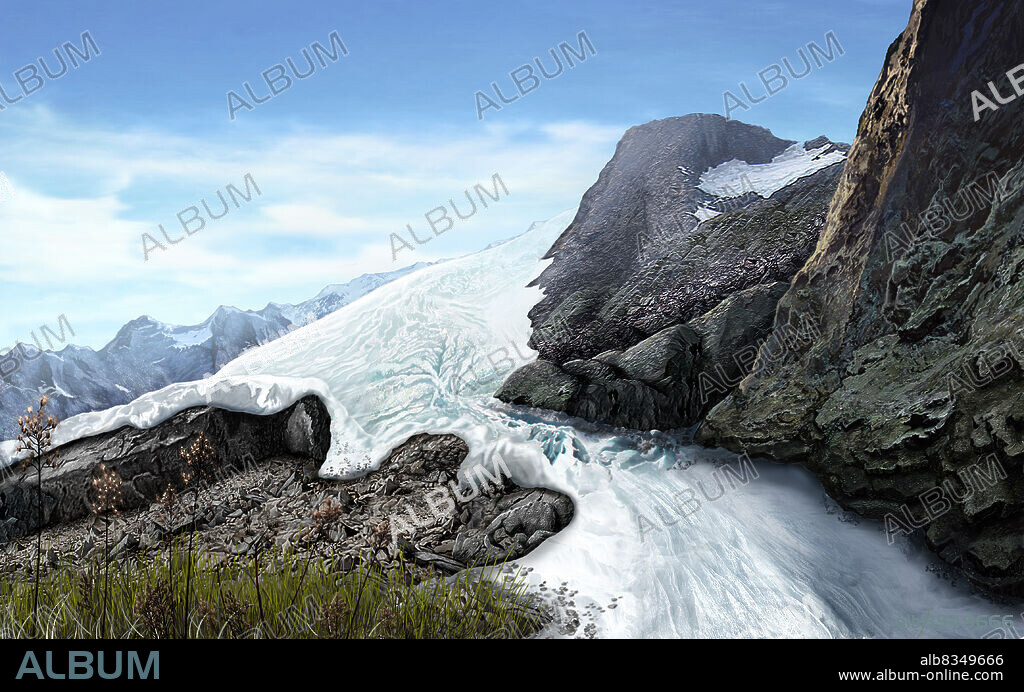alb8349666
In the coldest regions of the planet, the snow never melts. As it collects, snow becomes compacted by its own weight. It turns granular and after several years is transformed into ice. As it slides down a mountainside,. this heavy ice becomes an enormous, moving mass called a glacier. Glaciers are found on Earths highest mountains. Vast continental glaciers, called inland ices, cover most of Greenland and Antarctica. The Greenland inland ice alone covers more than 660,000 square miles (1.7 million sq km). During the last ice age, a period of cold that affected much of our planet, an ice sheet several miles (or kilometers) thick covered almost 30 percent of the Earths land surface. This area included almost half of North America and Europe. With the gradual warming of the planet, most of the ice sheet melted. Today, ice caps and glaciers cover only about 10 percent. of the continents.

|
Ajouter à une autre Lightbox |
|
Ajouter à une autre Lightbox |



Avez-vous déjà un compte? S'identifier
Vous n'avez pas de compte ? S'inscrire
Acheter cette image.
Sélectionnez l'usage:

Légende:
Voir la traduction automatique
In the coldest regions of the planet, the snow never melts. As it collects, snow becomes compacted by its own weight. It turns granular and after several years is transformed into ice. As it slides down a mountainside,. this heavy ice becomes an enormous, moving mass called a glacier. Glaciers are found on Earths highest mountains. Vast continental glaciers, called inland ices, cover most of Greenland and Antarctica. The Greenland inland ice alone covers more than 660,000 square miles (1.7 million sq km). During the last ice age, a period of cold that affected much of our planet, an ice sheet several miles (or kilometers) thick covered almost 30 percent of the Earths land surface. This area included almost half of North America and Europe. With the gradual warming of the planet, most of the ice sheet melted. Today, ice caps and glaciers cover only about 10 percent. of the continents.
Crédit:
Album / Universal Images Group
Autorisations:
Taille de l'image:
4587 x 2864 px | 37.6 MB
Taille d'impression:
38.8 x 24.2 cm | 15.3 x 9.5 in (300 dpi)
Mots clés:
 Pinterest
Pinterest Twitter
Twitter Facebook
Facebook Copier le lien
Copier le lien Email
Email
